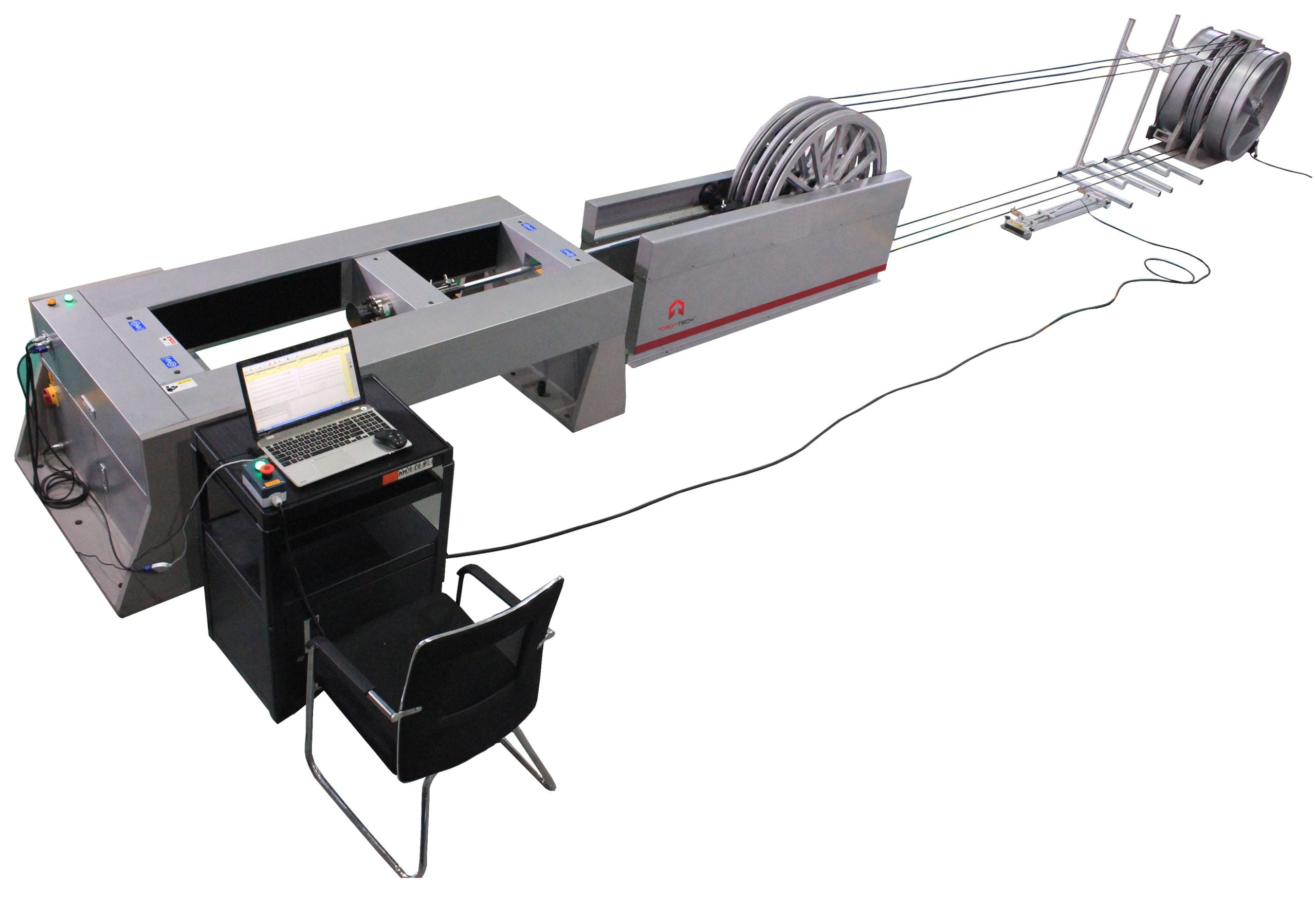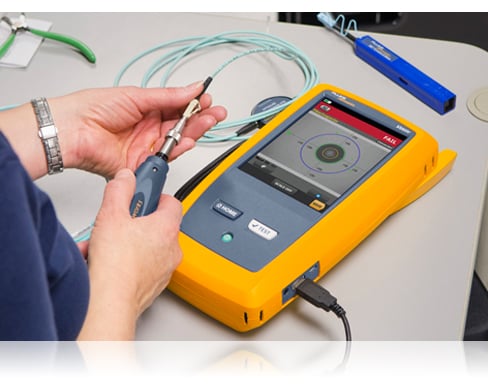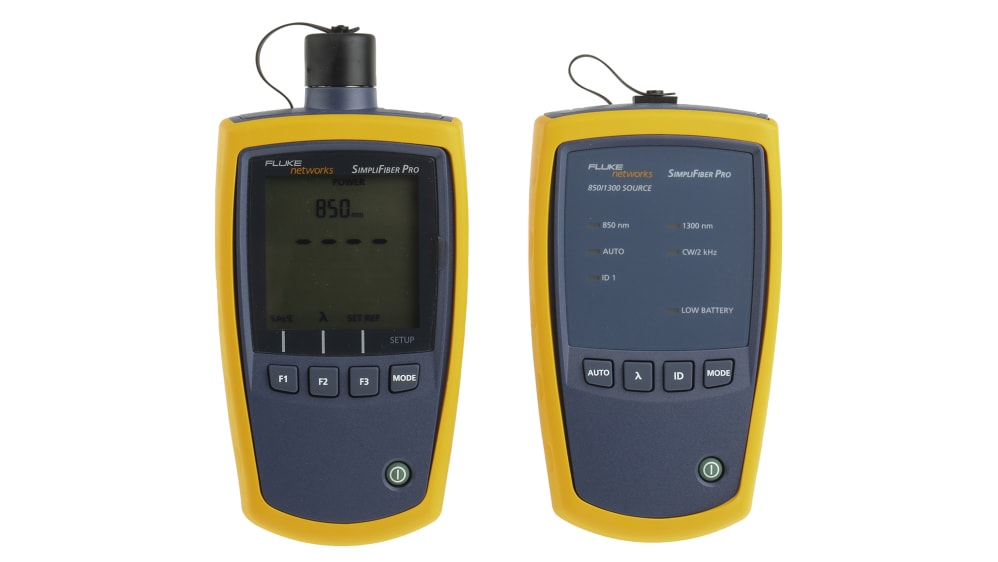Introducing the Secret Utilizes of Optical Fibre Checking for Reliable Information Transmission
In the realm of modern interaction, optical fibre screening becomes a crucial technique for optimizing data transmission. By employing techniques such as Optical Time Domain Name Reflectometry (OTDR) and insertion loss analyses, network operators can properly pinpoint and resolve problems that might compromise signal stability. As the need for faster and a lot more dependable links proceeds to increase, the effects of these testing techniques prolong past immediate fault discovery, influencing lasting network efficiency. Recognizing the multifaceted applications of optical fiber testing welcomes a much deeper expedition right into its crucial duty in forming the future of information interaction.

Relevance of Optical Fiber Screening
The relevance of optical fiber testing can not be overemphasized, as it works as a critical component in making certain the reliability and efficiency of data transmission systems. In an age where high-speed interaction is critical, any type of shortages in fibre optics can lead to significant data loss and lowered performance. Rigorous screening protocols are necessary to validate the honesty and performance of optical wires.
Evaluating enables for the identification of problems such as micro-bends, macrobends, and splice losses that could hinder signal quality. Moreover, it supplies understandings right into the overall attenuation and data transfer capacities of the fiber, making certain that the network meets certain functional requirements. Routine screening not only improves system performance but additionally lengthens the lifespan of the infrastructure by determining prospective issues prior to they intensify right into pricey failings.

Kinds Of Optical Fiber Tests
Numerous kinds of optical fibre examinations are conducted to make certain the performance and integrity of fibre optic networks. These examinations can be classified into several key types, each offering a particular function in assessing the honesty of the fibre.
First, Optical Time Domain Reflectometry (OTDR) is a famous examination that determines mistakes, splices, and connectors within the fiber. By sending pulses of light and evaluating the shown signals, professionals can identify issues along the fibre's length.
Second, insertion loss examinations assess the amount of signal loss when light passes with connectors or splices, which is crucial for preserving network performance.
Third, return loss examinations measure the quantity of light showed back in the direction of the source, supplying insights into the quality of connections and possible sources of disturbance.
Additionally, continuity examinations ensure that the fiber course is complete, allowing specialists to confirm that the fibre is undamaged without any breaks. optical fibre diameter analyser.
Lastly, visual fault locators utilize visible light to determine breaks or serious bends in the fibre, assisting in quick troubleshooting. Jointly, these tests create a thorough strategy to keeping ideal performance in fibre optic networks.

Applications in Network Maintenance
In contemporary telecommunications, dig this effective network upkeep depends greatly on optical fibre testing to identify and fix issues immediately. Regular testing makes sure that the network runs at optimum performance levels, minimizing downtime and enhancing customer experience.
Among the main applications of optical fibre screening in maintenance is the detection of mistakes, such as breaks, flexes, or incorrect connections. Techniques like Optical Time Domain Name Reflectometry (OTDR) enable professionals to find these concerns properly and examine the high quality of the fiber link. Additionally, loss testing verifies the stability of the optical path, ensuring that signal attenuation continues to be within acceptable limits.
Regular upkeep testing additionally assists in preventative actions, determining potential issues before they rise into significant failings. This aggressive technique can save companies both time and funds. Moreover, during upgrades or growths, optical fibre screening ensures that new setups integrate flawlessly with existing infrastructure.
Enhancing Data Transmission Reliability
Efficient network maintenance through optical fiber testing not just addresses immediate problems however likewise plays a significant function in enhancing information transmission dependability. By identifying mistakes, gauging signal loss, and examining the general problem of fibre optic cords, testing makes certain that potential troubles are rectified prior to they rise into substantial disruptions.
Normal optical fiber testing, such as time-domain reflectometry (TDR) and optical time-domain reflectometry (OTDR), permits professionals to determine the specific areas of breaks, flexes, or port concerns within the network. This proactive technique not just minimizes downtime but likewise maximizes the efficiency of data transmission by making certain that the pathways for signals are clear and go to this web-site functioning effectively.
In addition, testing aids in verifying adherence to industry standards and specifications, which is vital for preserving the honesty of information pop over to this site flow. By ensuring that each link satisfies required thresholds for loss and quality, companies can bolster their self-confidence in the reliability of their data networks.
Ultimately, investing in thorough optical fiber testing not only improves data transmission integrity yet also sustains the long-lasting operational efficiency of communication facilities.
Future Fads in Fiber Screening
Emerging technologies are positioned to revolutionize fibre testing, leading the way for enhanced efficiency and precision in data transmission diagnostics (robotic vision). As the demand for faster net and greater bandwidth proceeds to climb, the assimilation of innovative tools such as fabricated knowledge (AI) and artificial intelligence (ML) is set to change standard fibre screening methods. These modern technologies will enable anticipating upkeep and automated fault discovery, significantly lowering downtime and improving network dependability
In addition, the fostering of Web of Things (IoT) tools will certainly promote real-time tracking of fibre networks, enabling for prompt identification of performance concerns. This shift in the direction of proactive administration will decrease interruptions and optimize information flow.
Additionally, technologies in optical time-domain reflectometry (OTDR) and brand-new testing criteria will improve the accuracy of dimensions, making certain that data integrity is kept throughout the transmission process. The development of 5G innovation likewise requires the advancement of more advanced fibre testing techniques to support its high-speed requirements.
Verdict
In final thought, optical fiber screening is crucial for maintaining effective data transmission within interaction networks. By employing numerous testing strategies, such as OTDR and insertion loss tests, potential mistakes can be identified and fixed, consequently enhancing signal clearness and decreasing downtime. Regular testing not only makes sure compliance with sector standards however also helps with proactive maintenance, eventually adding to the long-lasting dependability and performance of fibre optic systems. The ongoing advancement of screening techniques will even more boost these capacities in the future.
Comments on “Innovative robotic vision solutions improve automation and precision.”